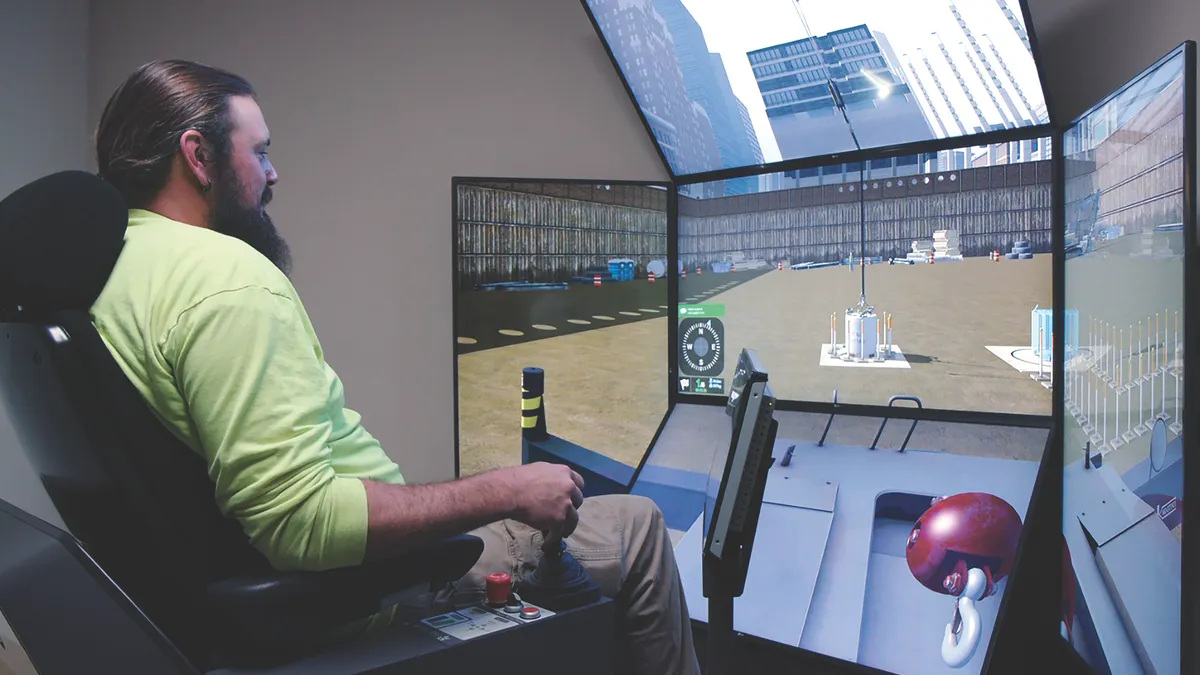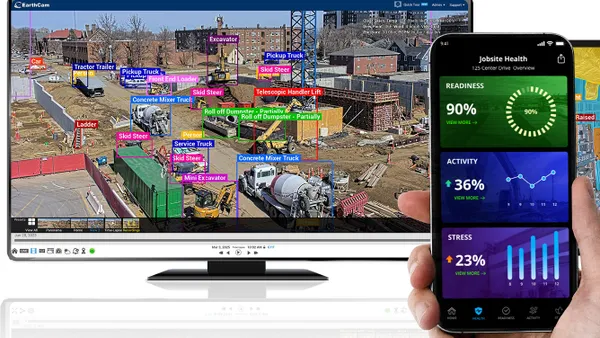While virtual reality simulators can attract younger workers to the industry and get them up to speed faster, they can’t completely replace real world training situations, some experts say.
Many industry-related companies are employing headsets, simulators and other machines that mimic the real world conditions found on a jobsite. Workers then use these for training on everything from cranes and forklifts to scaffolding setup.
Associated Builders and Contractors (ABC) began looking into practical applications of VR simulators as a “proof of concept” about a year ago, said Greg Sizemore, vice president of environment, health and safety, and workforce development of ABC. The association showcased a simulator at its conference last year.
ABC enlisted a VR company’s help to design a simulator that could test a worker’s knowledge of safety measures, Sizemore said. The simulator, developed by ROK360, allowed conference goers to walk around wearing an Oculus headset. Users saw three different sets of virtual scaffolding and were asked to identify safety issues to help determine which scaffolding option was safest.
This version of the test used the Oculus VR technology, but Sizemore said that it could also be utilized through point-and-click on a computer monitor. The response from conference attendees was incredibly positive, Sizemore said, and helped users feel as if they were in real-world environments.
“Our attempt was to validate the application within our industry,” Sizemore said, adding that the next step is getting contractors in touch with developers, so they can customize the technology for their own use.
“I think what we realized is that this is not a once and done,” Sizemore said, indicating the technology could have a wide variety of applications.
Virtual safety
Some companies have found success using the Oculus headset to simulate the feeling of operating a large piece of equipment.
United Rentals has rolled out two lift simulators, with plans for forklift simulators to become available on the market in 2020, that allow the user to master the machinery before stepping onto a real jobsite.
Bal Guerrero, United Academy director for United Rentals, said the VR simulators offer a “smooth transition” to working onsite with a forklift or other heavy equipment. Having the training done in a controlled environment allows for safer conditions for the trainee in a safe environment and ensures all vehicles on the site are being used for work, and none are removed for training.
The United Rentals model puts the user in a “basket” with the Oculus headset, so they are physically moving and turning with the forklift, and feeling the resistance and movement when they do.
Guerrero said the simulators can also be used to rehab, retrain or teach new habits to experienced lift drivers.
United Rentals has 40 simulators across North America, and they’re using the information to develop more. Proving the competency in the United Academy allows them to see what habits they can teach before anyone arrives on a jobsite.
Crane simulation
CM Labs, a Canadian simulation company, builds the Vortex Simulator, which displays real-world conditions over multiple screens to give realistic training.
The Vortex crane simulator can mimic weather conditions such as high winds, which could be frightening to a new operator, said David Clark, product marketing manager for CM Labs. Using simulators also appeals to the new generation of the workforce, as they have a grasp on the technology already.
“The younger generation really gets this kind of technology, and it is an opportunity to show them that construction is a progressive, forward-thinking industry,” Clark said.
Nevertheless, simulators can’t yet replicate what it’s like for a trainee to be physically present on a jobsite. Real-world training makes a big difference, said David Doherty, crane operations manager for contractor Cianbro.
Doherty acknowledged that using the simulators can save time and money, but even then, emergency situations on a site cannot be completely prepared for. Modern simulators create the effect of a jobsite and try to build scenarios around potential issues, but they’re still imperfect, Doherty said.
Sizemore said while he has found the simulators to be effective, they are a new technology that should be taken seriously and not just for fun.
“This isn’t video games,” he said, adding that it is a disservice to see simulators as just “gamification.”














